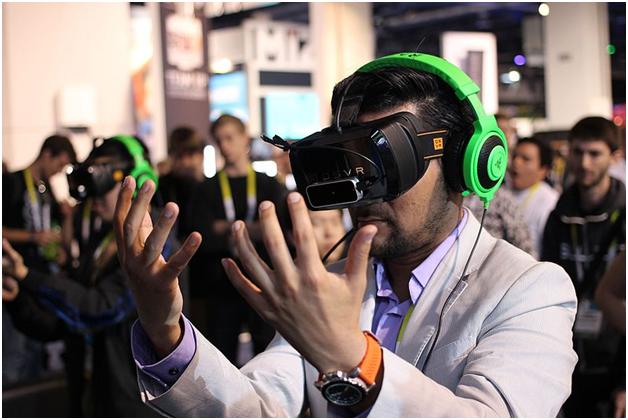
The Baby Boomer generation is reaching its golden years. Along with the joys of retirement, travel, and catching up with family, this aging population faces challenges as well. Seniors today want to maintain an active and dynamic lifestyle, even as they face medical issues. Meanwhile, family caregivers are under pressure from this growth, even as the caregiving market is growing dramatically. It’s expected to reach nearly 300 billion dollars by 2020.
The medical market for assistive technology keeps growing and prices keep dropping. This creates some amazing opportunities for people to improve care, broaden their options, and more. So what’s out there and how can these devices help? Read on to learn more about wearables, communication technology, and virtual assistants.
Wearables
Devices to wear on the person can make a big difference in a senior’s independence and safety. This category includes tech like GPS trackers, medical alert systems, and other smart devices.
GPS trackers can work twofold. First of all, they notify caregivers of the senior’s location. This could be lifesaving in the case of people with dementia. It can also help in simple, everyday situations like getting separated while shopping at the mall. Additionally, if the senior has an accident such as a fall, these devices guide response teams to them quickly.
Medical alert systems have been around for a while. In fact, you’ve probably seen the ads on TV. These systems are typically either a wristband or necklace with buttons and sensors. Depending on the device, it may be able to detect falls, provide GPS tracking, or enable a senior to talk to a response team at the touch of a button. Some also function as hands-free phones, making it very convenient to keep in contact with friends and family. However, not every system is a good fit so make sure you check out medical alert system reviews before investing in one.
Another great piece of tech is medication trackers. These come as apps or wearable devices. They function as sophisticated alarm clocks, signaling when it’s time to take medication. Some include pictures of the pills to be taken, which is great for seniors or their caregivers who are juggling a number of prescriptions.
Finally, hearing aids are getting an exciting upgrade. Thanks to Bluetooth technology, some can be directly connected to a phone, TV, or computer. This allows the senior to skip fumbling with headphones and enjoy audio broadcasted straight to the ear. These smart hearing aids can also connect to virtual assistants like Siri and Google Assistant (see below). Smart watches may also have similar functionality.
Communication Technology
Smart phones and the rise of 4G have made it easier than ever to communicate with others, to schedule doctors’ visits, and to plan solutions for your day.
Telemedicine is at the forefront of medical technology. Starting at the basics: what is it? Telemedicine is technology that connects seniors and caregivers with medical teams. This can often be done from the comfort of home in the form of a virtual doctor visit. The doctor will contact his or her patient via video conference to discuss health concerns and goals. These can be used in conjunction with vital statistic monitoring software to get a complete picture of the patient’s health.
In complex or urgent cases, the senior will still need to go to the hospital. However, in non-urgent cases or as a follow-up, telemedicine really shines. It relieves the senior and caregiving team from the discomfort and waiting periods of a physical visit to the hospital.
Ride apps on phones open up mobility by allowing a senior to book a transportation seat, carpool with friends, and otherwise find transport solutions. Depending on the area, seniors may be able to choose between transportation services like Uber and Lyft or city cab services. Some areas also have set bus routes for seniors that loop around major attractions such as grocery stores, parks, senior centers, etc.
Another area of assistance is the modern ability to have household necessities delivered. These services generally do come with a fee. However, they may still be cost-effective when you consider gas fees, bridge tolls, and the inconvenience of an afternoon spent doing errands. Grocery and medication deliveries, for instance, can take a lot of pressure out of a busy schedule. Meanwhile, services such as Postmates match caregivers to a personal shopper who will buy whatever is needed. Finally, many major grocery stores also offer delivery service with discounted or waived delivery charges for seniors.
Virtual Assistants
Virtual assistants may not be able to give overworked caregivers an extra pair of hands, but they can do a lot to help. These assistants are activated by a key phrase such as ‘Hello, Siri.’ They can be taught to understand a variety of accents and intonations. Even seniors who slur their words after a stroke may be able to use a virtual assistant.
One of the greatest advantages of virtual assistants is that the senior won’t need to learn to use this year’s latest piece of complicated tech. Virtual assistants are easy to use and can help the senior stay connected to loved ones and manage daily tasks such as:
- Calling family members
- Creating to-do lists
- Getting directions
- Remembering important dates
- Playing an audiobook
- Turning lights on and off
- and more!
The future is looking bright in the senior care field. Assistive technology is making great strides as it becomes more sophisticated, affordable, and user-friendly. Thanks to these devices, seniors can enjoy greater independence, and caregivers have more options than ever.



















